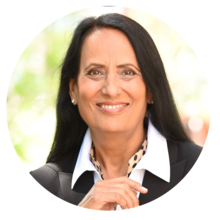About this Presentation
This presentation provides lessons learned while writing and teaching others to write transformational strategy and tactic (S&T) trees. The giants that this work stands on are TOC and Dr. Eli Goldratt. Dr. Goldratt developed the S&T tree in 1985, but shelved it because at that time he was unable to teach others how to write an S&T tree. In the mid 2000’s, the S&T began being utilized again by Goldratt Group. The goal of this presentation is to share the key lessons Dr. Ferguson learned while working with Dr. Goldratt and later developed during her time working on her own for the past several years. Key learning points include: How the six-step standing on the shoulders of giants (SOSG) process was applied to achieve her ability to write polished S&T trees; and how the SOSG process was applied to teaching others to write S&T trees. How do you find the balance between the big picture (forest) and the details (trees)? How do we adjust this balance to achieve harmony as reality changes? Big picture Level 1 the strategy or objective of the organization core conflict EC. Objective A Become an ever-flourishing organization. B. Grow profits and sales exponentially year after year and C Maintain stability Injection: build a decisive competitive edge....Understanding for the five levels what each level is achieving. L1 the huge pot of gold or statement of current reality of achieving the goal and necessary conditions of the organization. L2 How to meet the needs of the stakeholders of the organization with emphasis on the external market... L3 Provides the method for achieving the strategies and tactics but not specific actions on how to do it (functional). L4 Making the switch through the golden assumptions which explain what we can do moving from theory to practice... practical actions. L5 More explanation/clarity is provided if needed. Details: sentences that are written in the tree. Five entities are in each step (necessity assumption, strategy, tactic, parallel assumption, and sufficiency assumption). Sentence structure is important as: every word counts. Recall 5 entities in a step with definitions.
What Will You Learn
To help you get the most value from this session, we’ve highlighted a few key points. These takeaways capture the main ideas and practical insights from the presentation, making it easier for you to review, reflect, and apply what you’ve learned.

Understanding the big picture and the details is crucial in writing a successful strategy and tactics tree.
The balance between seeing the big picture and the details is a continuum, and people often feel comfortable at different points on this continuum.
The five levels of a strategy and tactics tree provide a detailed implementation plan, with the lowest level steps becoming part of the critical chain project implementation plan.
Instructor(s)
Lisa Anne Ferguson
Dr. Lisa Ferguson's goal in life is to illuminate the way to utopia for individuals, organizations, and the rest of society. Our strategies and tactics are based on using the Theory of Constraints (TOC), combined with other best practices to dramatically improve strategic planning and execution, retail, education, healthcare and the health/happiness/success of individuals with a holistic approach. TOC was founded by Dr. Eli Goldratt to achieve his goal in life of teaching the world to think. For a decade, Dr. Ferguson was a full-time professor of operations management before resigning to teach for The Goldratt Group full-time training consultants (both TOC experts and Supply Chain Logistics implementers). Next, Dr. Lisa Ferguson spent a year (2007 – 2008) working as the apprentice to best-selling author and business guru, Eliyahu M. Goldratt as he trained her to become an even more successful writer and speaker, while further developing her TOC expertise. Her service on the TOCICO Board of Directors in an elected, unpaid position is from 2008 – 2011 and 2020 – 2021. Professor Ferguson is the author of the chapter on Strategy and Tactic Trees in The Theory of Constraints Handbook. Dr. Ferguson began teaching online classes for Illuminutopia in 2010. She is a published author (as well as an editor) and consultant with experience guiding Fortune 100 companies down through small businesses.

Ms Alka Wadhwa
Alka Wadhwa is an experienced consultant and process improvement expert with over 24 years of expertise in the Theory of Constraints (TOC), Lean Six Sigma, and organizational performance optimization. She has successfully led projects in healthcare, financial services, and manufacturing, driving significant improvements such as a 67% boost in hospital operations and a 140% increase in outpatient visits.
Previously, Alka Wadhwa spent 17+ years at GE Global Research Center, where she led initiatives to enhance various GE businesses through advanced technologies, process redesign, and system optimization. Founder of Better Solutions Consulting, LLC, she specializes in using TOC, Six Sigma, and data analytics to streamline operations and build high-performance teams.
Her work has earned her multiple accolades, including the Empire State Award of Excellence in healthcare.

Dr Gary Wadhwa
Dr. Gary Wadhwa is a Board Certified Oral & Maxillofacial Surgeon with extensive experience in the field. He completed his Oral & Maxillofacial Surgery training at Montefiore Hospital, Albert Einstein College of Medicine in Bronx, NY, and has served as an Attending at prestigious institutions like St. Peters Hospitals, Ellis Hospital, and Beth Israel Hospital in NY. With a career spanning over two decades, he was the former CEO and President of a group specialty practice in NY from 1994 to 2015. Dr. Wadhwa holds an MBA from UT at Knoxville, TN, and has undergone additional training in System Dynamics at MIT, Health System Management at Harvard Business School, and Entrepreneurship and healthcare innovations at Columbia Business School. Committed to expanding access to Oral & Maxillofacial Surgery care, he is currently engaged in a meaningful project to provide healthcare services to underserved populations in inner city and rural areas through non-profit Community Health Centers.
